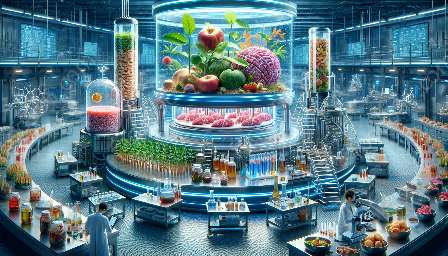Biocontrol strategies have become increasingly important in ensuring the safety and quality of food products. In the face of growing concerns over foodborne illnesses and pesticide residues, the development of biocontrol methods has emerged as a promising solution to address these challenges.
What are Biocontrol Strategies?
Biocontrol involves the use of living organisms or their natural products to control pests and pathogens that affect agricultural crops and stored food products. Unlike traditional chemical methods, biocontrol strategies focus on harnessing the power of nature to manage pests and diseases in a sustainable and environmentally friendly manner.
Types of Biocontrol Strategies
- Microbial Biocontrol Agents: Certain microorganisms, including bacteria, fungi, and viruses, have demonstrated effectiveness in controlling pests and pathogens. For example, the use of Bacillus thuringiensis (Bt), a soil bacterium, has been successful in managing insect pests in agriculture.
- Parasitoids and Predators: Insects that parasitize or prey on pest species can be employed as biocontrol agents. These natural enemies help to reduce pest populations and prevent damage to crops.
- Botanical Biopesticides: Plant-derived compounds, such as neem oil and pyrethrin, have shown biocontrol properties against various pests. These botanical biopesticides are considered safe alternatives to synthetic chemical pesticides.
- Biological Control through Genetic Modification: Biotechnological approaches have enabled the development of genetically modified organisms (GMOs) with enhanced resistance to pests and diseases. These genetically engineered crops offer an innovative form of biocontrol for improving food safety and quality.
Role of Biotechnological Approaches in Food Safety and Quality Control
In recent years, biotechnological advancements have significantly contributed to the enhancement of food safety and quality control measures. Biotechnology applications in the food industry encompass a wide range of tools and techniques that leverage biological systems to address food-related challenges.
Biotechnological Innovations in Food Safety: The utilization of molecular biology and genetic engineering has led to the development of rapid and accurate methods for detecting foodborne pathogens and contaminants. This has facilitated the early identification of safety hazards in food production and distribution.
Genetically Modified Foods (GMFs): Genetic modification has enabled the creation of crops with improved nutritional profiles and enhanced resistance to pests and diseases. These GMFs offer the potential to enhance food safety and nutritional value while reducing the reliance on chemical pest control methods.
Biopreservation Techniques: Biotechnological approaches have paved the way for the application of natural antimicrobial compounds and beneficial microorganisms to extend the shelf life of perishable food products. Biopreservation methods help maintain the freshness and quality of foods without the need for synthetic preservatives.
Interplay of Food Biotechnology and Biocontrol Strategies
The synergy between food biotechnology and biocontrol strategies presents exciting opportunities for sustainable agriculture and improved food safety. By integrating biotechnological advances with biocontrol methods, researchers and industry professionals can develop innovative solutions to safeguard food quality and minimize the use of conventional pesticides.
Biotechnological Tools for Biocontrol: The use of biotechnological tools, such as gene editing and recombinant DNA technology, allows for the targeted enhancement of biocontrol agents. By manipulating the genetic traits of beneficial organisms, scientists can optimize their effectiveness in controlling pests and diseases.
Enhanced Food Safety through Biotechnological Intervention: The integration of biotechnological interventions in food production and processing contributes to the mitigation of food safety risks. From pathogen detection to post-harvest treatments, biotechnology plays a pivotal role in ensuring the safety and integrity of the food supply chain.
Sustainable Solutions for Quality Control: Through the application of biotechnological innovations, the development of sustainable and ecologically sound biocontrol strategies becomes achievable. This holistic approach aligns with the principles of food biotechnology by promoting environmentally responsible practices in food production.
Conclusion
In conclusion, the intersection of biocontrol strategies, biotechnological approaches, and food biotechnology represents a dynamic frontier in the quest for enhanced food safety and quality control. By harnessing the power of living organisms and leveraging biotechnological tools, the food industry can cultivate sustainable solutions that benefit both consumers and the environment. As ongoing research and technological advancements continue to shape the landscape of food innovation, the synergy between biocontrol and biotechnology holds the potential to revolutionize the way we ensure the safety and quality of our food supply.

